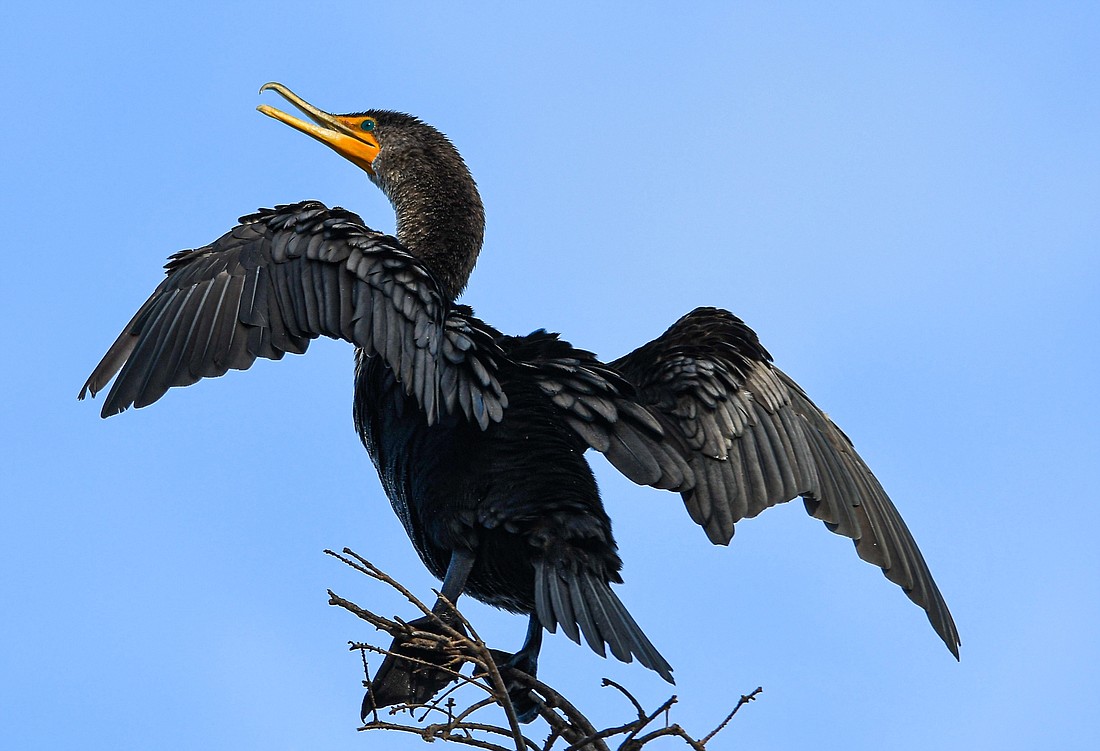- December 12, 2025
-
-
Loading

Loading

With stunning turquoise eyes, dark orange throat patches and a down-turned hook at the end of their bills, double-crested cormorants are the most widespread cormorant in North America. Named for the two small tufts (or crests) of feathers on either side of their heads (most clearly seen in mating season), you might spot them swimming, with only their head and neck above water, foraging for fish in freshwater and saltwater. Using their webbed feet for propulsion, and aided by their solid bodies and dense bones, these expert swimmers are able to dive to depths of up to 25 feet in quest of prey.
But it is after each dive, when they perch out of water, with their backs to the sun and their wings spread wide, that you're most likely to spot these striking birds. Unlike many other species of water birds, such as ducks, which have waterproof feathers, to promote efficient deep-diving, cormorants have feathers that become easily waterlogged. To dry their wings, which is essential for flight, cormorants depend on the sun.
Double-crested cormorant numbers decreased in the 1960s because of the effects of DDT but have recovered since the pesticide was banned. However, as cormorants swim underwater to catch their food, they often get entangled in discarded fishing line or are hooked by lures. Even worse, they are at high risk of being struck by motorboats.
We can help protect our double-crested cormorants by keeping plastics and fishing gear (hooks, weights and fishing line) out of our environment and waterways. And, while boating, please be mindful of birds (as well as other wildlife) sharing our beautiful Sarasota waterways.